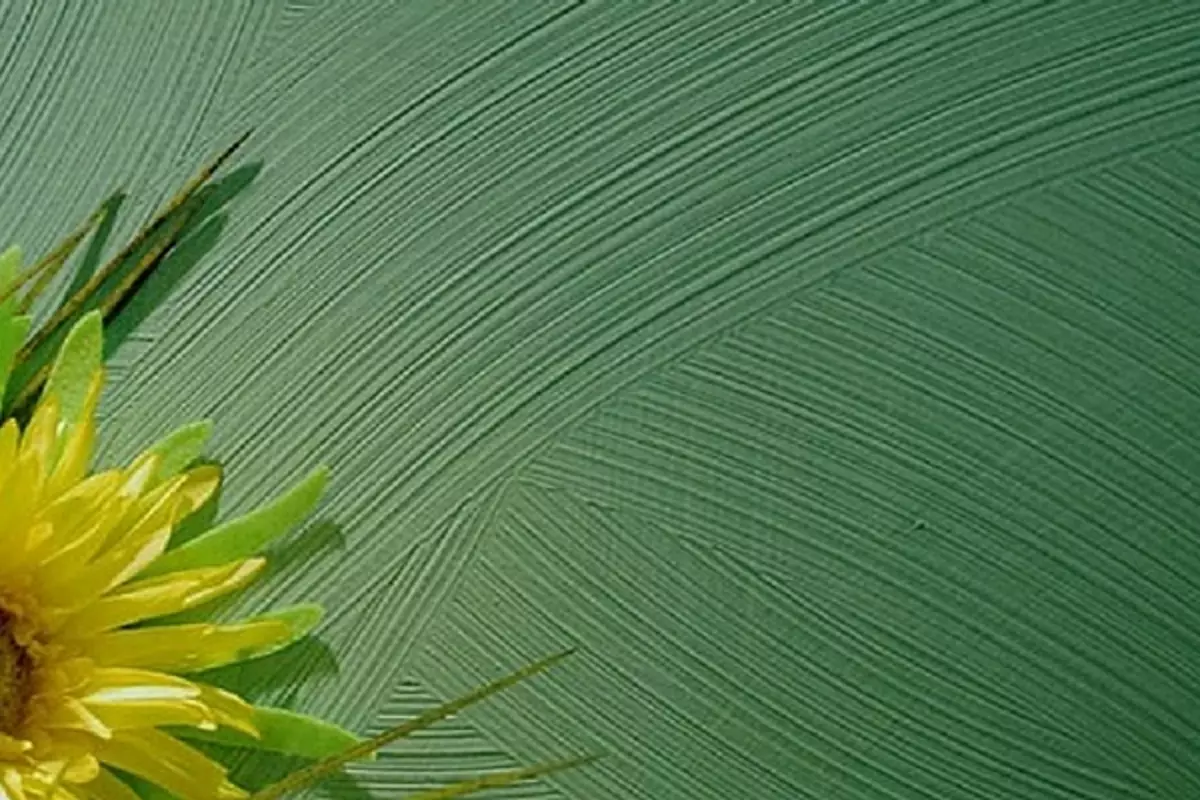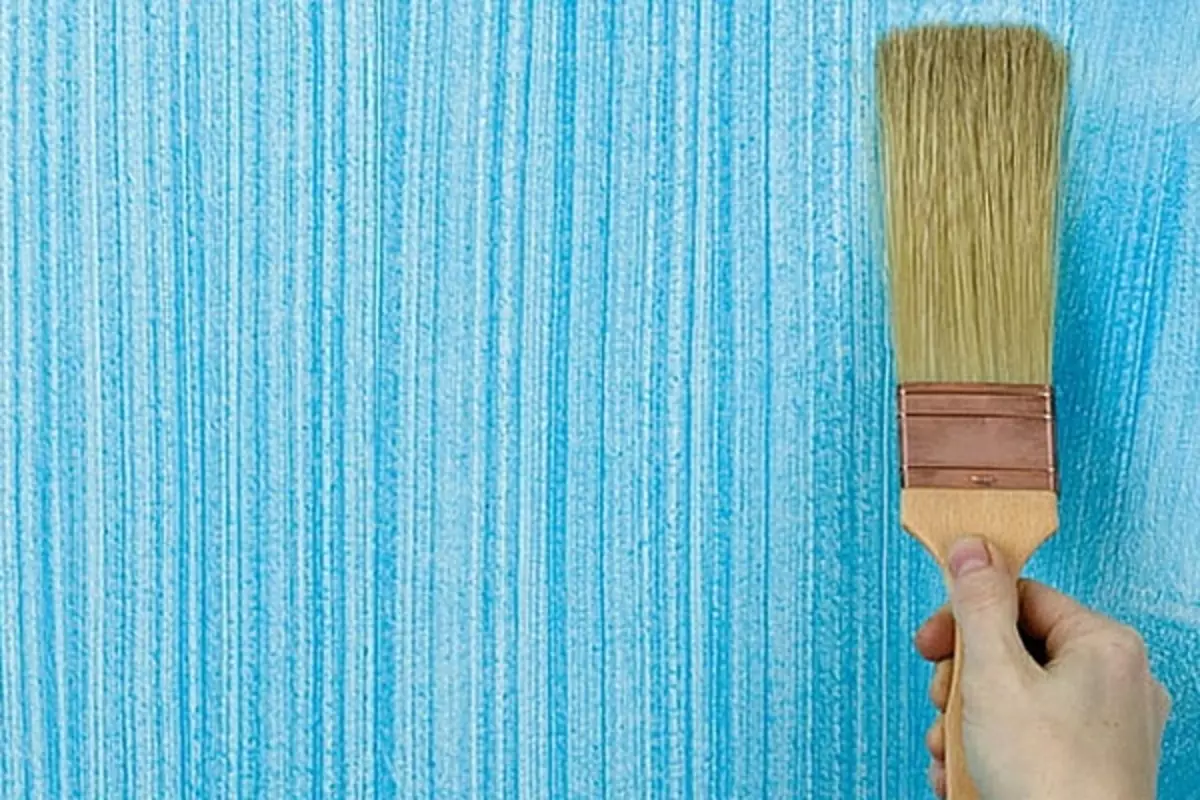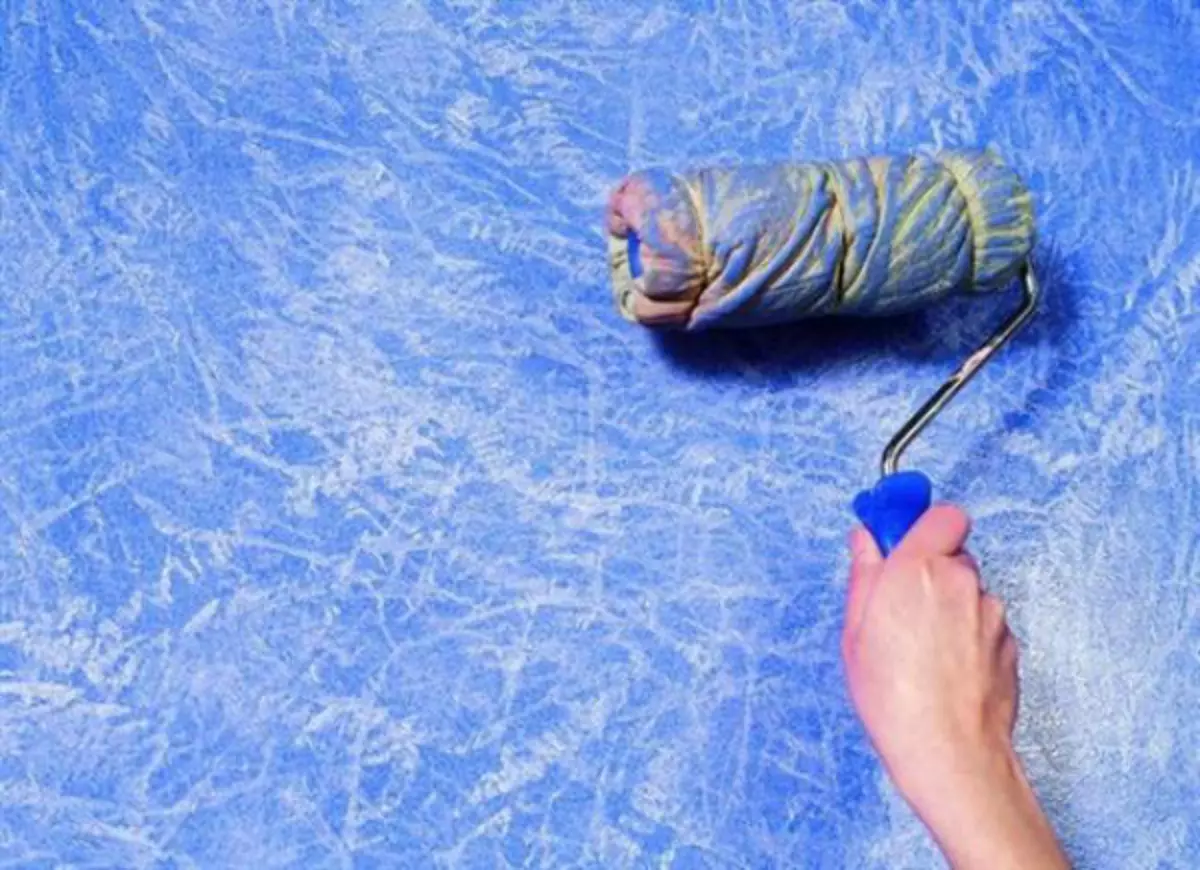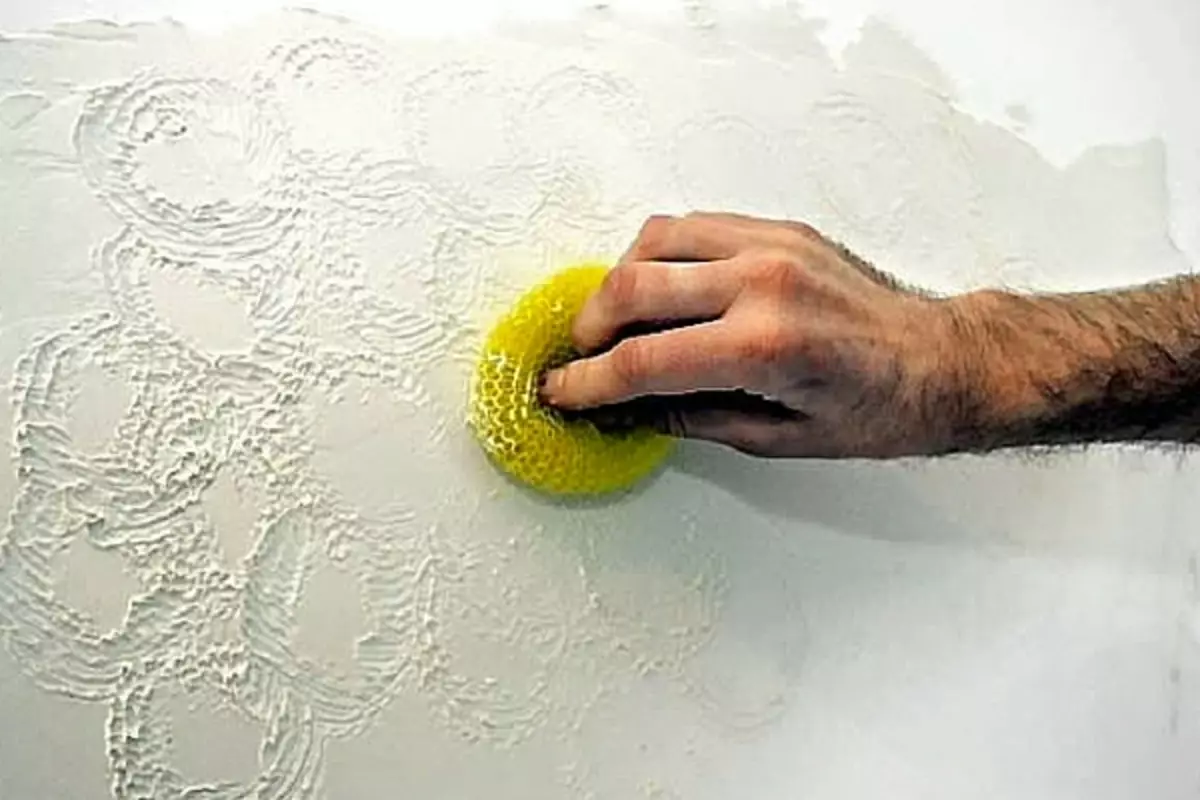The walls of the textured paint walls are a good and modern solution that allows you to create an interesting relief on the surface, as well as the saving of you from the need to conduct thorough preliminary preparation of the wall - the density of the material is quite capable of providing a camouflage effect for small flaws.
Pros and cons
The main distinctive feature of the texture finishing material is its ability to attach an interesting relief surfaces. Structural paint for walls is extremely popular, due to its numerous advantages:
- The duration of operation - the texture paint for wall decoration is an average of 10 years, but the traditional wallpaper is twice as smaller. And then, those canvas of wallpapers that will lose color will have to be replaced, but the walls, decomposed paint, can be simply painted;
- Decorative textured paint for walls has high resistance to mechanical effects and is not afraid of high humidity;
- The surface trimmed in this way has a harmonious appearance, creating a single composition;
- Painting of walls in the kitchen of textured paint - a good solution for those who are familiar with the problem of washing: such a surface is easy to clean, unlike paper wallpaper;
- The latitude of the choice of the shade - to create any liked the tone is very simple - it is enough to add the necessary acrylic or water-emulsion paint to the composition;
- The material is absolutely safe, does not cause allergic reactions;
- Textural paint - an rarity universal: it has an aesthetic appearance (suitable for finishing the status living room), universal (easy to clean, therefore used in the kitchen), has a high level of moisture resistance (even in bathrooms can be used);
- The material is practical - it is characterized by an anti-static effect, repulcing dust from the surface.

The only relative disadvantage can be called the need to prepare the walls to apply the material. But this requires any finish, and the structural paint, on the contrary, does not force us thoroughly align the walls, as it effectively fills small cracks. And, of course, the cost: it is relatively high, since the consumption of the material is about 1 kg each square meter.
Article on the topic: How to plaster Wooden surface: Features of work
What effect can be done
The textured painting of walls with their own hands is not a difficult procedure, but a variety of effects that can be achieved, truly amazes:
- The effect of pearl surface is especially relevant in the premises where little natural light. Looking at this surface at different angles, you will notice the change in the shade - it is for this property that such paints have earned a comparison with chameleon. The finished pearlescent coating in the room has the form of a tight cut slicer of silk;

- The effect of velor - the composition of such a material includes small particles, which, when applied to the surface, create a velvet effect;
- The effect of the granite surface - due to acrylic bubbles, the desired effect is created without the presence of granite crumbs in the composition;
- Decorative compositions - contain special impurities in its composition - a small cheesecake, sand or other components, each of which provides its own, unique effect.
How to choose
Often, instead of the expected Wow effect, we get a neuroming something remotely resembling the desired result. As a rule, the whole thing is that the inappropriate composition was chosen. For annoying surprises does not occur, it is worth examining the features of certain types of coatings:- on mineral base. The most accessible option made on the basis of lime and cement. It is used mainly to finish the outer walls using a structural roller;
- on silicone basis. The universal means, with the same effect, is used both for external and internal works;
- Silicate paints. One of the most expensive, but, of course, the most practical option - such a coating will calmly solve the temperature differences, increased humidity and other adversity;
- acrylic paints. They are fully prepared for use: just take a roller for painting walls, calierah composition if necessary, and work.
Stages of application
In terms of its quality characteristics, textured paints are very close to textural plaster. But the first represent a more "thin" option, so they have increased plasticity. When the material is applied, but not yet dry, form a relief using textured special rollers for painting walls - thanks to them, intricate patterns appear on your walls, resembling exotic plants, crumpled skin or even textiles.
Article on the topic: Ceiling with your hands from drywall: Step by step instructions

To make a depth texture, you can add a contrasting column of paint in some places of the surface. True, a good result is rarely able to someone who first engaged in such a type of activity.
Therefore, be sure to test the test on a small area of the surface. That's all, it remains to wait for a complete drying of the applied material. As a result of such simple manipulations, you will receive an original and non-standard surface that none of your acquaintances. Successful experiments and bold solutions!

Video "Working with texture paint"
This video video will introduce you to several techniques for applying textured paint and creating various drawings on the wall.
